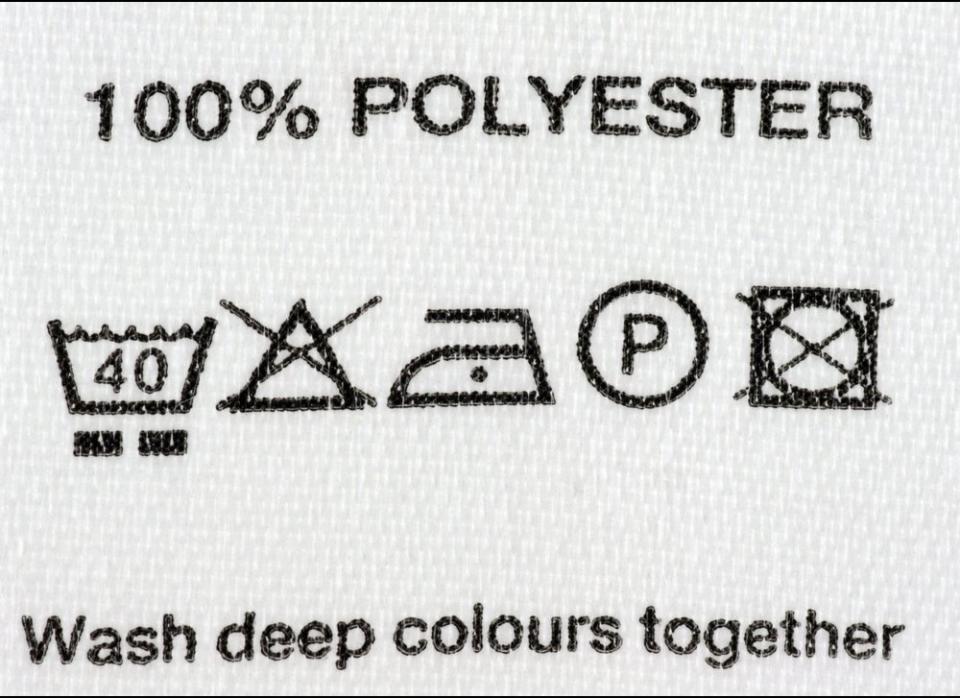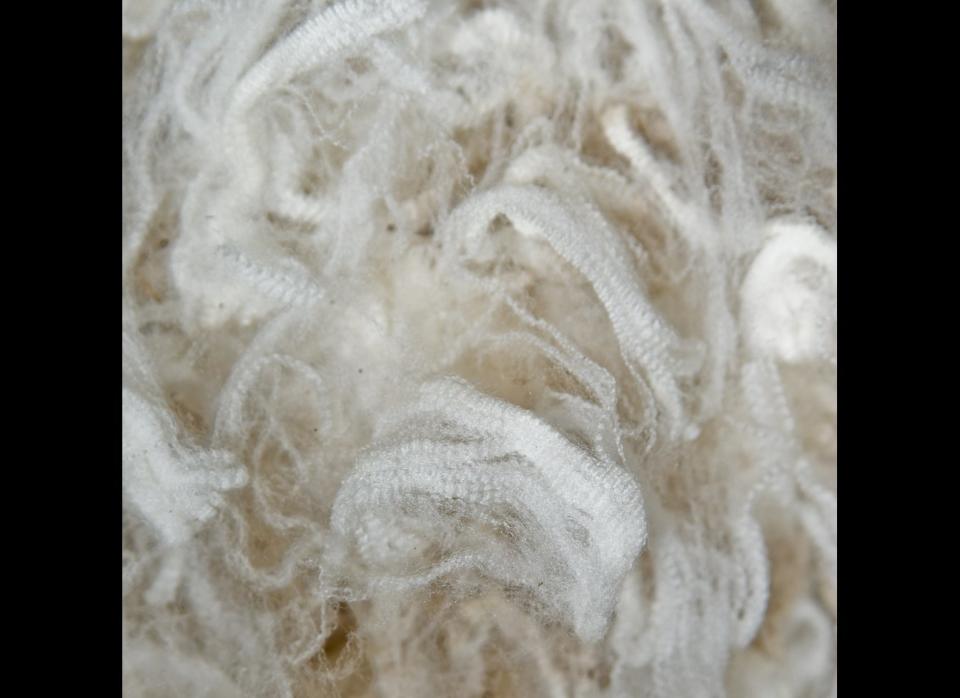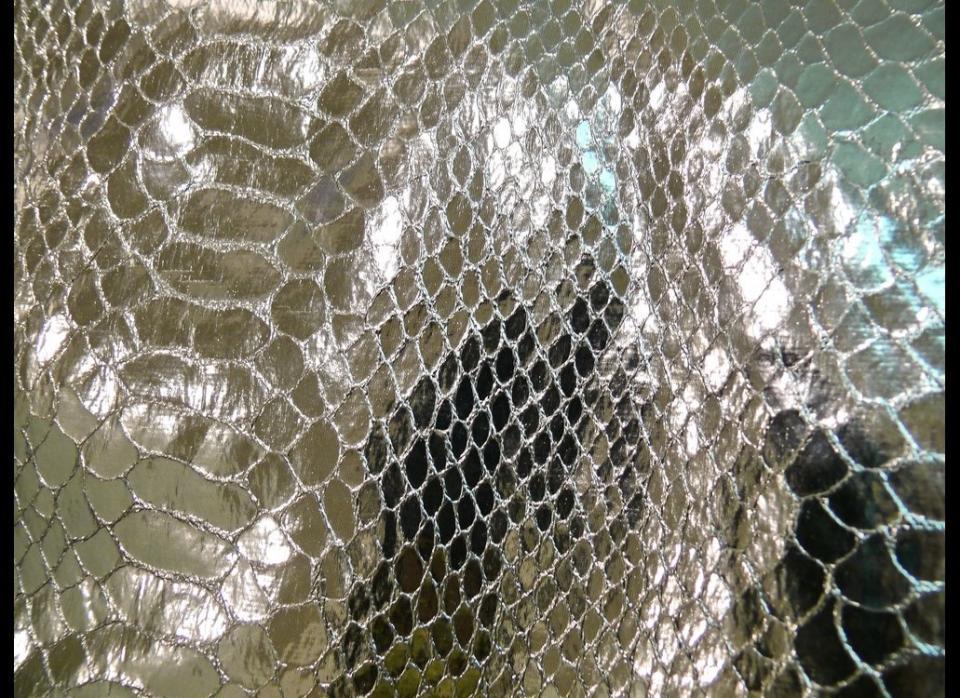8 Easy Ways To Make Your Clothes Last Longer (And Not Get So Filthy)
Fashion isn't all glitz and glam -- there's a filthy side of it, too: stains, tears, shrinkage, you name it. We've all been there and been disappointed (okay, heartbroken) when our clothes appear ruined.
But before you toss your beloved clothes in the trash ever again, read on, because author Kim Castellano is determined to solve your problems with her new book"The Dirty Side of Fashion."For Kim, there's no issue too impossible or situation too embarrassing. So we bring you the top eight fashion fixes everyone should have in their back pocket.
1. THE DIRTY:Sweat StainsBecause discoloration around the armpits is anything but chic.

THE FIX:Sweat happens. Ladies, steal this tip from the guys and try wearing a tight cotton t-shirt under your clothes to keep perspiration, deodorant and bacteria away. Beige is key, as it's less visible under white. If a full tee just won't work,Garment Guardshields are disposable circles you can stick onto your shirt so your skin doesn't actually touch the fabric. Your deodorant can also be the culprit, so shy away from those with aluminum salts in the ingredients. May your whites stay white forever!
2. THE DIRTY:Other Bodily Fluid StainsIt could be the wrath of your monthly visitor, lactation, man secretions, blister juice, #2, you name it -- it's all protein-based and a real pain when it comes to cleaning.

THE FIX:Castellano's best advice: Wear underwear! You never want fluids to touch your actual clothing, so skivvies, socks and the like are your friends. If your outfit absolutely won't allow for actual panties, theKnicker Sticker(exactly what it sounds like) is your savior. But hey, stains do sneak up on us sometimes -- so when they do, be sure to attack them ASAP with cold water.
3. THE DIRTY: Ring-Around-The-CollarEver notice pesky gunk around your neckline or the brim of your hat? It's a mix of dead skin, sebum, sweat and dirt -- and nobody wants that!

THE FIX:Start at the beginning, says Castellano. Get serious about cleaning yourself! Give your skin a good scrub when you hit the shower to clear away as much as you can.White Collar Grimedisposable protectors will give you an extra hand, providing coverage you can toss and reapply when you're ready for a fresh change.
4. THE DIRTY: Fading, Shrinking, Pilling, BleedingIt's true: Wearing and washing can change the shade, size or quality of a garment... much to our dismay.

THE FIX:It's all about reading the label and not being lazy. Castellano's plea: separate, separate, separate! Be conscious when doing your laundry -- sort clothes by fabric, color, level of dirt and drying time. Give each item the care it needs to extend its shelf-life to the fullest. And for the love of all things holy: Be careful with bleach!
5. THE DIRTY: Buttons And Baubles Get Damaged Or Go MissingIt's never fun to look down and wonder what happened to your flair. Whether they've been broken or have gone bye-bye, it's especially a bummer when you don't have a spare.

THE FIX:Sometimes it's close to impossible to find a replacement, so take precious pieces to the dry cleaner. If you must do it at home, launder them only after wrapping the embellishments withbutton covers.
6. THE DIRTY: Ruining Your ClothesWithYour ClothesThat's right, be warned -- things like Velcro and zippers can wreak havoc in the washing machine.

THE FIX:Secure all Velcro and zip up before it's laundry time -- you don't want your clothes sticking and snagging as they brush up against each other. Remember that metal can melt in the dryer and scald other items, so the safest thing to do is hand wash separately.
7. THE DIRTY: WrinklesFew things look as frumpy and un-put-together as clothing that's crinkly (and solving the problem isn't always smooth)!

THE FIX:While you don't want wrinkles, irons can be dangerous. Not only can they cause burns, but they can set stains as well, so make sure you're ironing pristine pieces with straight strokes (circular motions are a don't). Place a cloth between delicate items and the iron to protect gentle fabrics. If you're tackling an entire pile, organize the garments in order from lowest to highest heat requirements. And, if you're paranoid, there's always the spritz-with-some-water-and-throw-it-in-the-dryer-for-a-few-minutes approach! Investing in a steamer is also a less-stressful alternative.
8. THE DIRTY:Over-Doing ItHow often do your clothes really need to be washed? It turns out thereissuch a thing as too much of a good thing...

THE FIX:According to Castellano, socks, underwear and swimwear should get a clean each time you wear them, but the rest of your stuff truly doesn't need a power wash after every use. Other items can go 2-5 wears (and when it comes to pants, "rarely" is enough if you've been rocking undies) -- a spot treat in-between will do the trick! It's not gross, we promise, and your garments will be grateful.
Follow Lauren Mikler on Twitter:https://twitter.com/LaurenMikler
Stay fresh and clean:
Cotton

Polyester

Wool (Especially Merino)

Silk
!["I haven't studied silk specifically, but it would be quite similar to Merino wool [at masking odours] -- it's a different fibre but similar in chemistry makeup," says McQueen. A few companies have started making exercise clothing with silk, particularly for long johns and yoga gear, so it could be worth hunting them down for less smelly clothes.](https://s.yimg.com/ny/api/res/1.2/.rBc4gVp01_5j0dYEJyJeA--/YXBwaWQ9aGlnaGxhbmRlcjt3PTk2MA--/https://img.huffingtonpost.com/asset/5b9d92c32100003100c5941f.jpg)
Silver Compounds

"It works on principle of lowering bacteria in the material - it has to be ionized. The ions interrupt the bacteria by reacting with proteins, but it's debatable how effective it can be."
Spandex
![Arguably the gym's favourite fabric, Spandex's lab-created nature could work counter to body odour.<br> "I haven't done anything specifically with this, but normally in a lot of garments, you don't have a huge amount of Spandex in them," explains McQueen. "I've heard anecdotally that some people seem to blame the elastic [for smells], which has to do with the chemical nature."](https://s.yimg.com/ny/api/res/1.2/HqqWj.5BQa4QaCgotaJuVg--/YXBwaWQ9aGlnaGxhbmRlcjt3PTk2MA--/https://img.huffingtonpost.com/asset/5b9d92c32000003100fe0492.jpg)
"I haven't done anything specifically with this, but normally in a lot of garments, you don't have a huge amount of Spandex in them," explains McQueen. "I've heard anecdotally that some people seem to blame the elastic [for smells], which has to do with the chemical nature."
Want more? Be sure to check out HuffPost Style onTwitter,Facebook,Tumblr,Pinterestand Instagram at @HuffPostStyle.
This article originally appeared on HuffPost.
